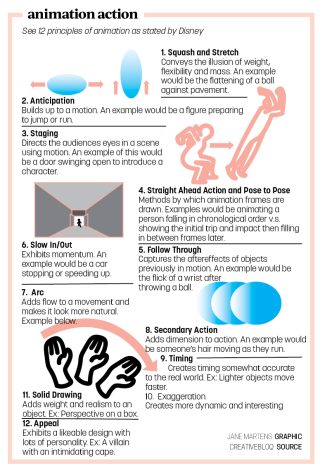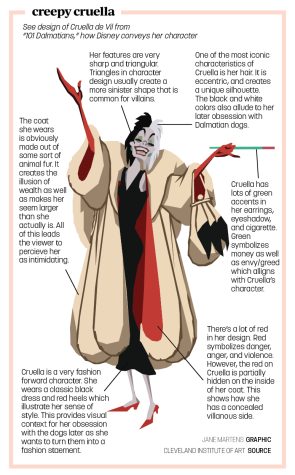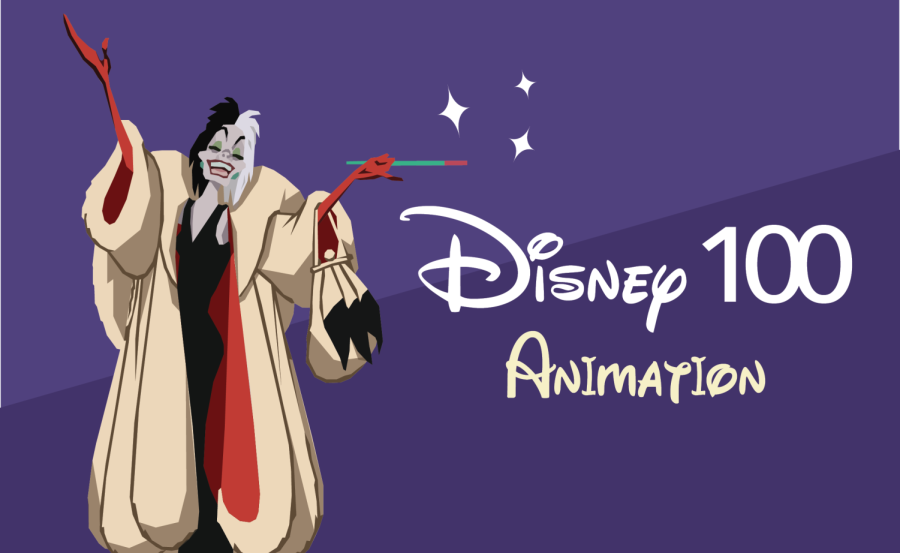As Justine Wang, president of Animation Club and senior, enters the second half of her final year of high school, she said her mind has been racing with the possibilities of future careers.
“I am cautiously planning on going into an art or animation career, but I understand that it is incredibly difficult,” she said. “So for now, I’m more interested in majoring in design or architecture because I find that they’re more versatile degrees to get. If I can get one of these degrees first, I’m more guaranteed a stable job out of college so I’m not homeless. Then, after I’ve secured my non-homeless status, I can see about a more artistic career.”
Wang is not alone with this mindset about her future, or lack thereof, in the arts.
In fact, according to an art magazine’s article by Carrol Michels titled “Advice for Artists on How to Make a Living—When Selling Art Doesn’t Pay the Bills,” “Rarely does (success in an art career) happen overnight, and realistically, until your career gets rolling, it is necessary to earn a living through other means.”

Avery Guo, vice president of Animation Club and senior, said she had a similar outlook to Wang and said she does not believe she will turn to art or animation as a main career.
“Sometimes artists will have trouble finding work or employment after they graduate college. It’s competitive to have to draw your art and to have someone want to buy it. So in the end, there might really only be a finite amount of consumers and buyers of art,” Guo said.
Andrew Murray, AP 2D Art and Design teacher, said he was also hesitant with going into a full-time individual art career.
“I do have (an art career) as a side career. I think most art teachers are going to freelance on the side, so I do murals. I’ve got a few murals in downtown Carmel. Just like the things that I’ll do in the summer to keep myself busy,” he said.
Guo said another factor that goes into the lack of long-term artist success is motivation in an individual setting. When money is hard to come by and consumers are not guaranteed, artists have even less motivation to fulfill their hard work.
“There’s not that many people who in the end remain motivated enough to keep continuing to create all their works all the time,” she said. “But I also realize that it’s kind of hard; you have to have a lot of inspiration all the time. You have to be motivated to paint every day for, like, five to six hours.”
However, with Walt Disney Studios’ 100-year celebration starting on Jan. 27, Guo said she understands how the animation studio has become so successful for such a long period of time, contrasting with other art-focused careers.
She said, “A lot of people won’t understand modern art, but maybe they’ll understand animation, and in movies we actually see these things. We can deeply appreciate it and there’s a story to animation as well. It’s not just purely drawing stuff. Art is like that too. Sometimes it’s obviously not just purely drawing. There’s also a concept behind it, but it’s much more obvious in the animations and it’s like a story.”
Murray said he agreed with Guo and contrasted the economic differences between autonomous art careers versus animation careers.
“In terms of art careers, we, of course, are all familiar with the starving-artist concept. If you’re going to go and if you’re not good enough or you’re not working hard enough, you’re just never going to get any money,” he said. “Well, animation, consequently, almost fights against that because you’re employed by somebody. We’re seeing that more and more of being a thing of having more careers where you’re being employed and thus have that consistent income and you’re not worrying about (money) so much.”

Wang said she has a similar perspective with Murray; however, she said animation success rates are higher than individual art success rates due to lack of opportunity.
“Disney was revolutionary at the time of hand-drawn 2D animation and that’s why it’s been able to be so successful for so long. You can get an animation job at an animation studio and have a pretty stable income, but there are less opportunities like this for pure artists,” she said.
Along those lines, Guo said individual art careers are vastly different from animation careers and other careers in general in society’s eyes leading to less success compared to these other careers.
“Let’s say you went to do engineering (and) you feel like maybe there’s more depth in your work because you’re actually contributing to society. You’re building bridges, people are using those bridges, you’re saving people from dying,” she said. “And (society is) like, ‘Wow, look at these artists, they’re just drawing all day. They’re drawing trees. What do these trees do? They’re not productive.’ Maybe that’s what (society) thinks.”
Ultimately, Wang said the struggles with success in art careers have to do with the difficulty of getting regular consumers compared to other careers.
She said, “Being a good artist is only half of it, the other half is figuring out how to convince people that they should buy something that doesn’t add anything but aesthetic value to their lives.”


































![What happened to theater etiquette? [opinion]](https://hilite.org/wp-content/uploads/2025/04/Entertainment-Perspective-Cover-1200x471.jpg)













































![Review: “The Immortal Soul Salvage Yard:” A criminally underrated poetry collection [MUSE]](https://hilite.org/wp-content/uploads/2025/03/71cju6TvqmL._AC_UF10001000_QL80_.jpg)
![Review: "Dog Man" is Unapologetically Chaotic [MUSE]](https://hilite.org/wp-content/uploads/2025/03/dogman-1200x700.jpg)
![Review: "Ne Zha 2": The WeChat family reunion I didn’t know I needed [MUSE]](https://hilite.org/wp-content/uploads/2025/03/unnamed-4.png)
![Review in Print: Maripaz Villar brings a delightfully unique style to the world of WEBTOON [MUSE]](https://hilite.org/wp-content/uploads/2023/12/maripazcover-1200x960.jpg)
![Review: “The Sword of Kaigen” is a masterpiece [MUSE]](https://hilite.org/wp-content/uploads/2023/11/Screenshot-2023-11-26-201051.png)
![Review: Gateron Oil Kings, great linear switches, okay price [MUSE]](https://hilite.org/wp-content/uploads/2023/11/Screenshot-2023-11-26-200553.png)
![Review: “A Haunting in Venice” is a significant improvement from other Agatha Christie adaptations [MUSE]](https://hilite.org/wp-content/uploads/2023/11/e7ee2938a6d422669771bce6d8088521.jpg)
![Review: A Thanksgiving story from elementary school, still just as interesting [MUSE]](https://hilite.org/wp-content/uploads/2023/11/Screenshot-2023-11-26-195514-987x1200.png)
![Review: "When I Fly Towards You", cute, uplifting youth drama [MUSE]](https://hilite.org/wp-content/uploads/2023/09/When-I-Fly-Towards-You-Chinese-drama.png)
![Postcards from Muse: Hawaii Travel Diary [MUSE]](https://hilite.org/wp-content/uploads/2023/09/My-project-1-1200x1200.jpg)
![Review: "Ladybug & Cat Noir: The Movie," departure from original show [MUSE]](https://hilite.org/wp-content/uploads/2023/09/Ladybug__Cat_Noir_-_The_Movie_poster.jpg)
![Review in Print: "Hidden Love" is the cute, uplifting drama everyone needs [MUSE]](https://hilite.org/wp-content/uploads/2023/09/hiddenlovecover-e1693597208225-1030x1200.png)
![Review in Print: "Heartstopper" is the heartwarming queer romance we all need [MUSE]](https://hilite.org/wp-content/uploads/2023/08/museheartstoppercover-1200x654.png)



